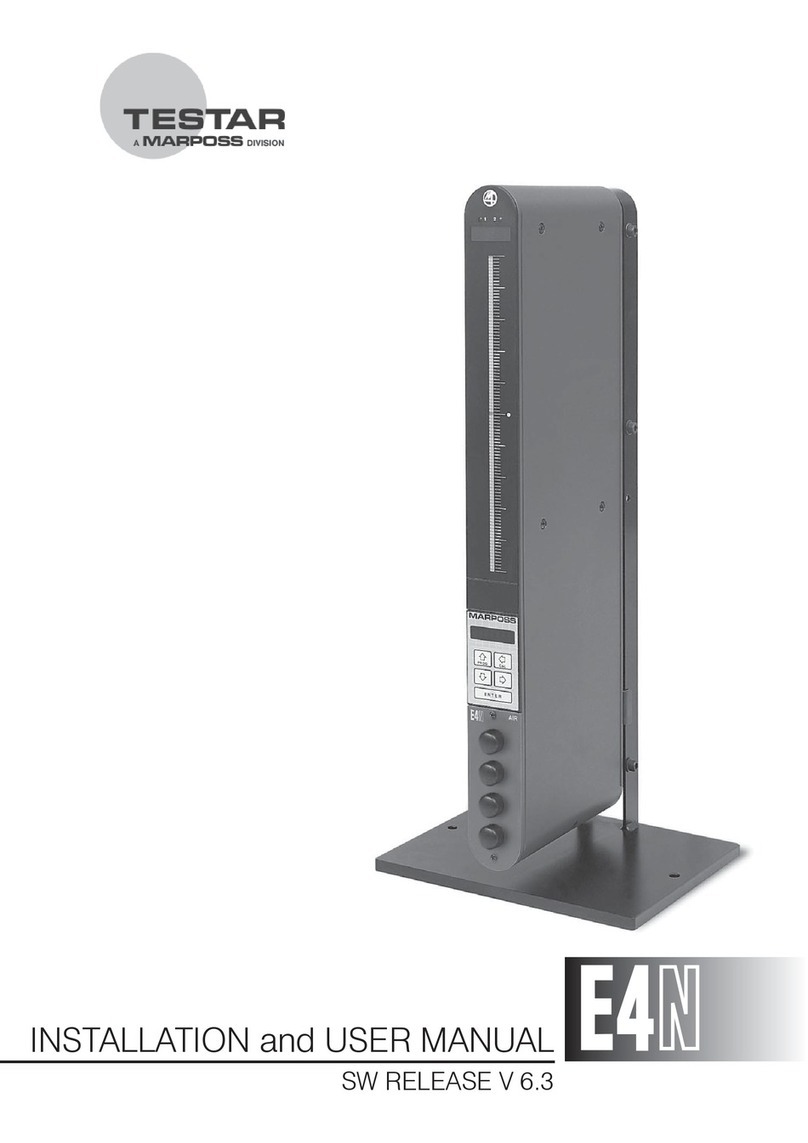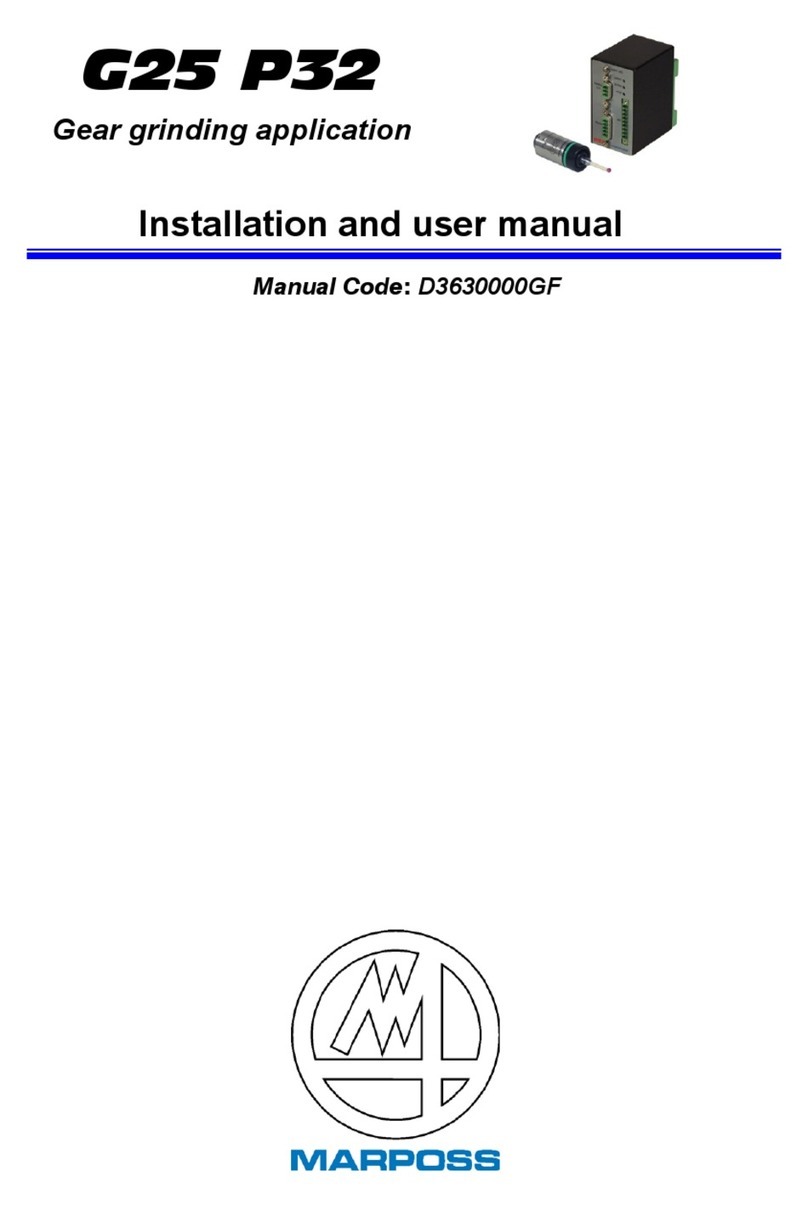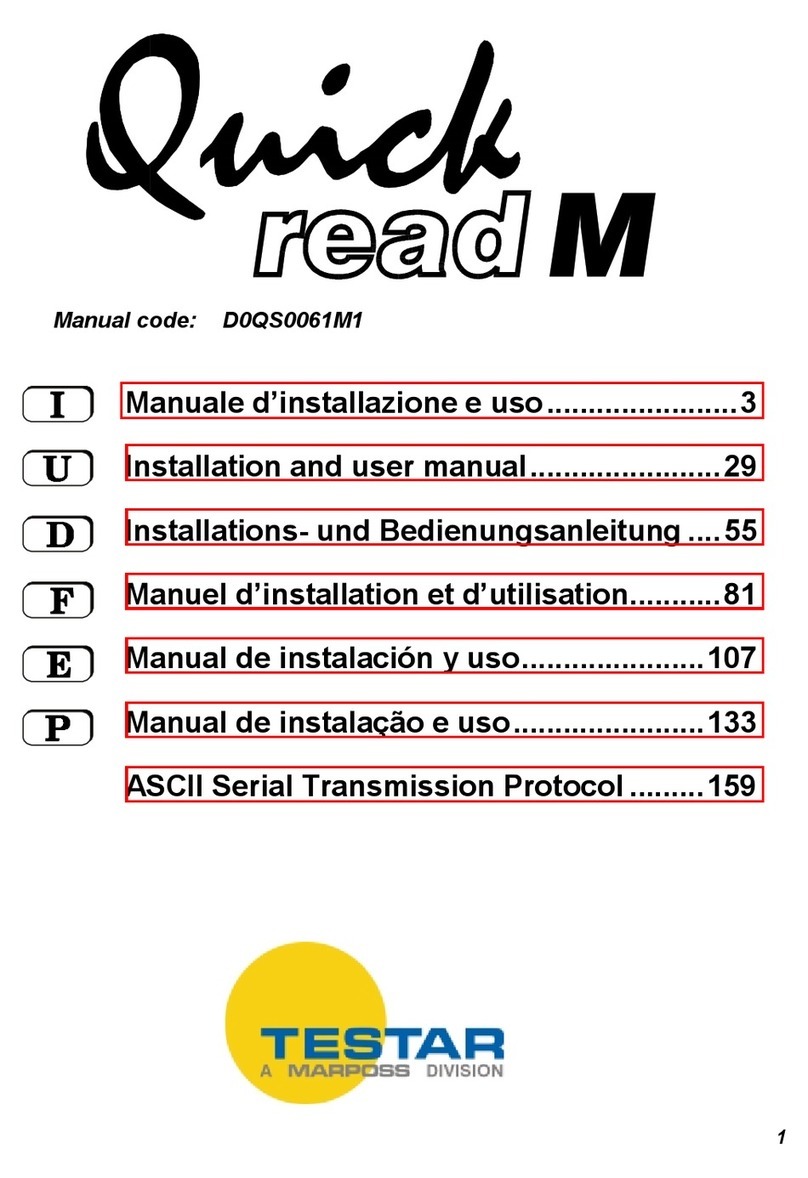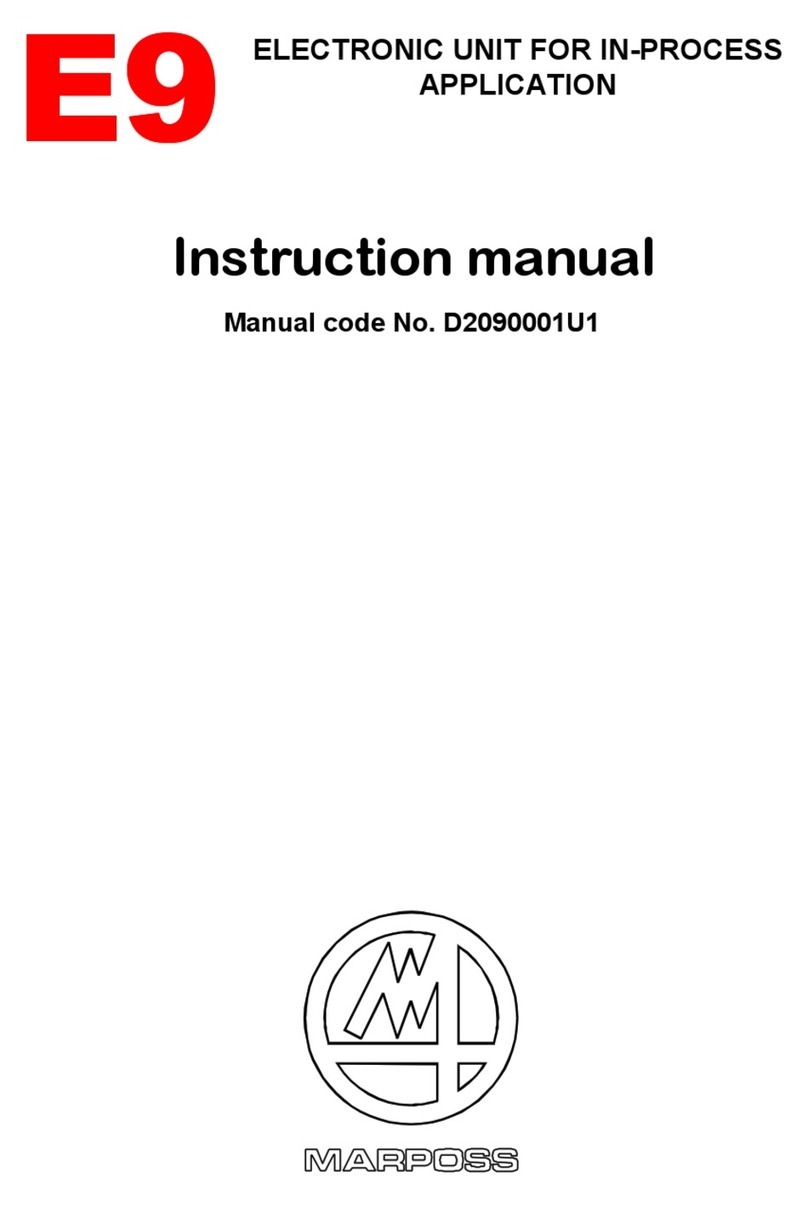CONTENTSCONTENTS
CONTENTSCONTENTS
CONTENTS
CHAPTER 1. DESCRIPTION OF MAIN PARTS 5
CHAPTER 2. ASSEMBLY AND ZERO-SETTING OF INDICATOR 6
PENCIL PROBE 6
MARPOSS MECHANICAL/ELECTRONIC INDICATORS 8
NON-MARPOSS INDICATORS 9
CHAPTER 3. REPLACEMENT OF PARTS AND COMPONENTS 10
3.1 PLUG GAUGE 10
3.1.1 REPLACEMENT OF PLUG GAUGE 11
3.1.2 CAP REMOVAL 13
3.1.3 CONTACTS REPLACEMENT 15
3.1.4 DISASSEMBLY OF NOSEPIECE/ARMSET 19
3.1.5 DISASSEMBLY OF BUSHING, ROD AND SPRING 23
3.2 HANDLE 25
3.2.1 PENCIL PROBE HOLDER 26
3.2.2 INDICATOR HOLDER HANDLES 28
CHAPTER 4. OPTIONAL ACCESSORIES 29
4.1 THREAD ADAPTORS 29
4.2 ANGLE 30
4.3 DEPTH STOPS 31
4.3.1 ASSEMBLY OF DEPTH STOPS FOR DEPTH EXTENSIONS 32
4.3.2 ASSEMBLY OF NOSEPIECES DEPTH STOPS 33
4.4 HOOKS 34
4.5 DEPTH EXTENSIONS 35
4.6 ROTARY SPACER 36
CHAPTER 5. TROUBLESHOOTING 37
5.1 REPEATABILITY TEST 38
CHAPTER 6. MAINTENANCE 39
6.1 ORDINARY MAINTENANCE 39
6.1.1 THREE MONTHS MAINTENANCE 39
6.1.2 SIX MONTHS MAINTENANCE 39
6.2 SPECIAL MAINTENANCE 40
CHAPTER 7. LIST OF SPARE PARTS 41
7.1 STANDARD INDICATOR HOLDER 41
7.1.1 COMPONENTS 41
7.2 MINI INDICATOR HANDLE 42
7.2.1 COMPONENTS 42
7.3 PENCIL PROBE HOLDER 43
7.3.1 COMPONENTS 43
7.4 PLUG GAUGES 44
7.4.1 NOSEPIECES 45
7.4.2 MEASURING ARMSETS 46
7.4.2.1 COMPONENTS 3 - Ø< 5,5 46
7.4.2.2 COMPONENTS 5,5 - Ø< 7,5 46
7.4.2.3 COMPONENTS 7,5 - Ø< 9,5 47
7.4.2.4 COMPONENTS 9,5 - Ø< 26 47
7.4.2.5 COMPONENTS 26 - Ø- 300 48
7.4.3 CONTACTS 48
7.5 ACCESSORIES 50
7.5.1 THREAD ADAPTORS 50
7.5.2 ANGLE ADAPTOR 50
7.5.3 CAPS 50
7.5.4 DEPTH STOPS 51
7.5.4.1 DEPTH STOPS FOR EXTENSIONS 51
7.5.4.2 DEPTH STOPS FOR NOSEPIECE 52
7.5.5 HOOKSHOOKS
HOOKSHOOKS
HOOKS 52
7.5.6 EXTENSIONS 52
7.5.7 ROTARY SPACER 53
7.6 INDICATORS 53
7.6.1 PENCIL PROBES 53
7.6.2 MECHANICAL INDICATOR 54
7.6.3 ELECTRONIC INDICATOR 54
7.7 WRENCHES FOR RETOOLING/RECONFIGURATION/MAINTENANCE 55
7.7.1 WRENCHES FOR CONTACTS 55
































